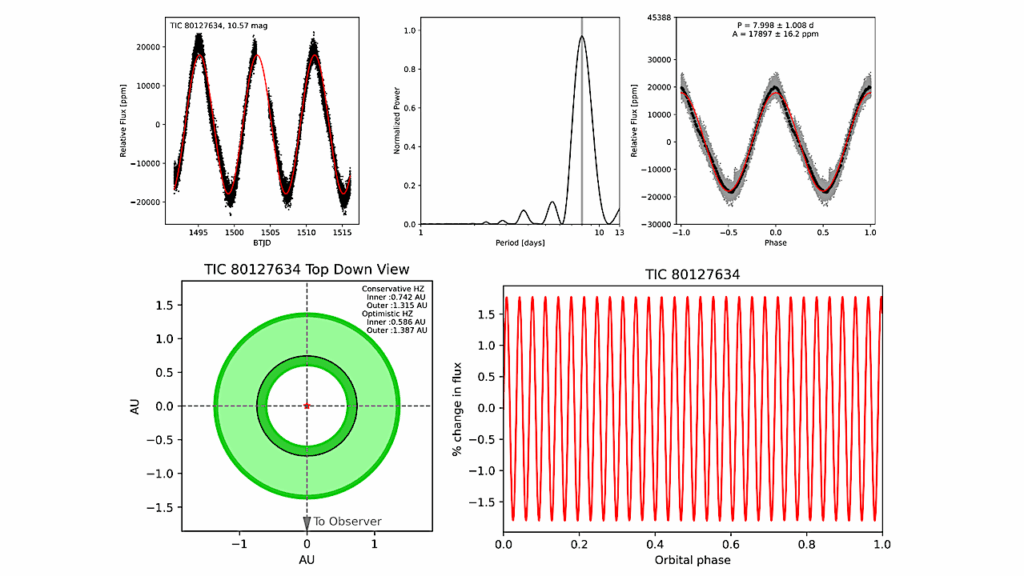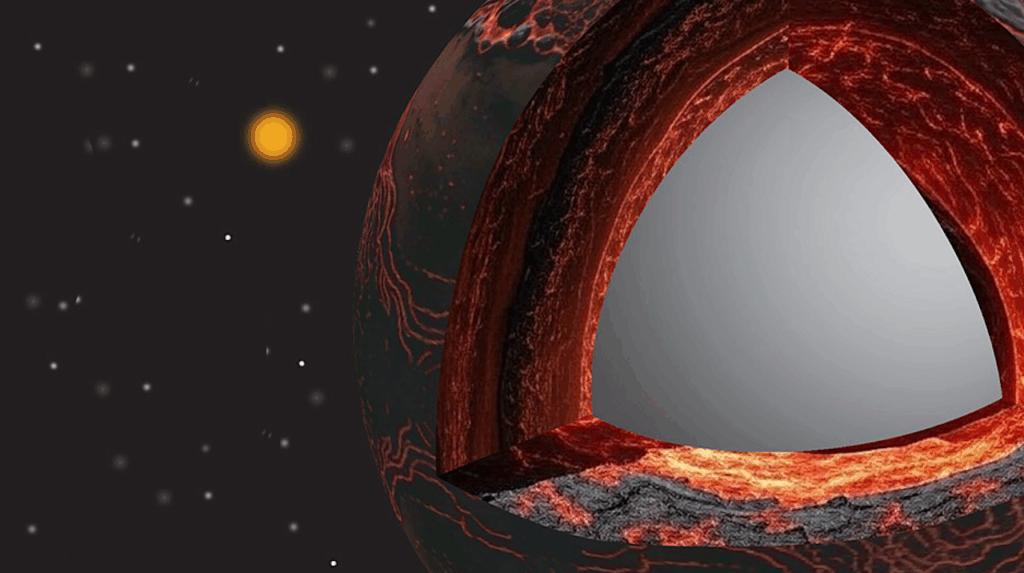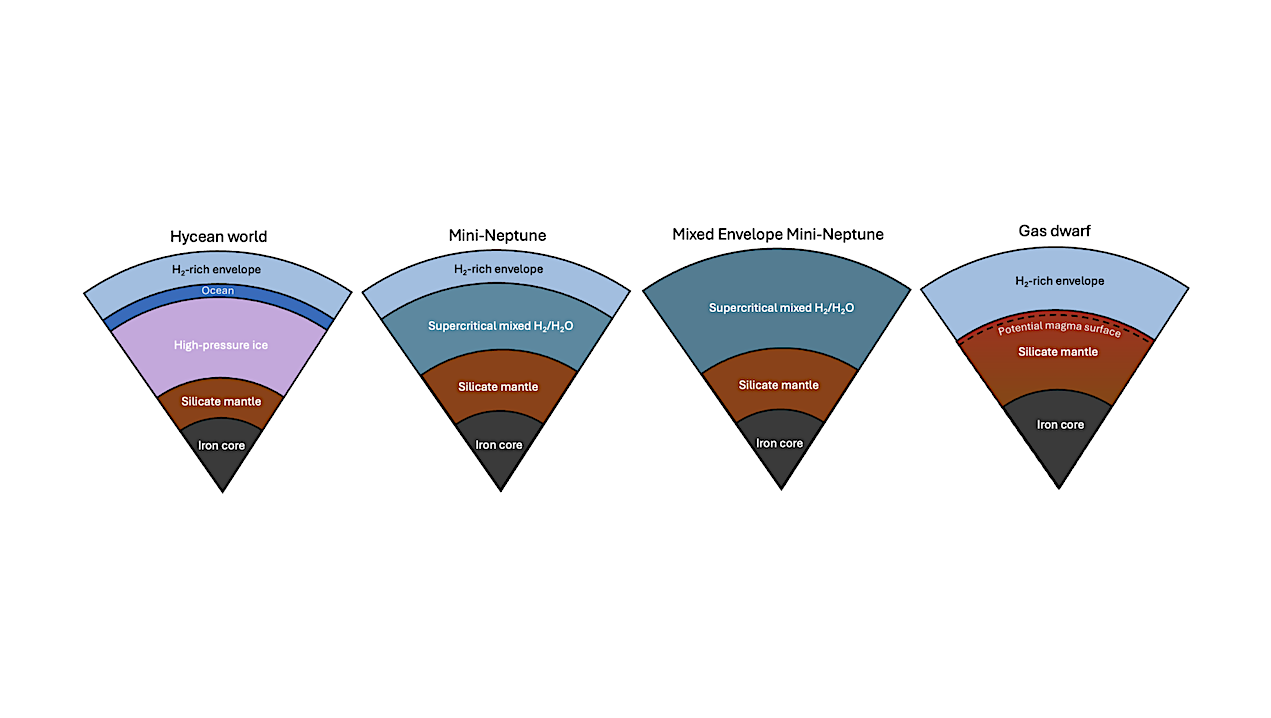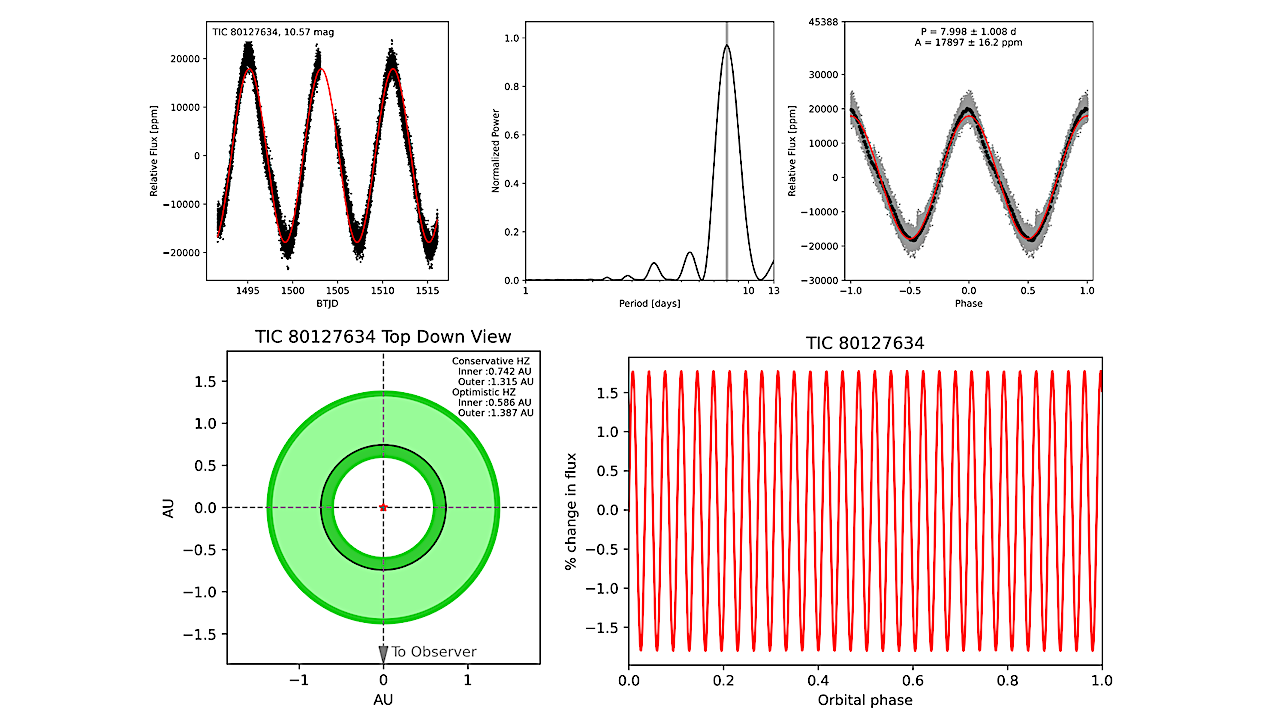Now Reading: Efficiency of Hydrodynamic Atmospheric Escape in Hot Jupiters and Super Earths
-
01
Efficiency of Hydrodynamic Atmospheric Escape in Hot Jupiters and Super Earths
Efficiency of Hydrodynamic Atmospheric Escape in Hot Jupiters and Super Earths
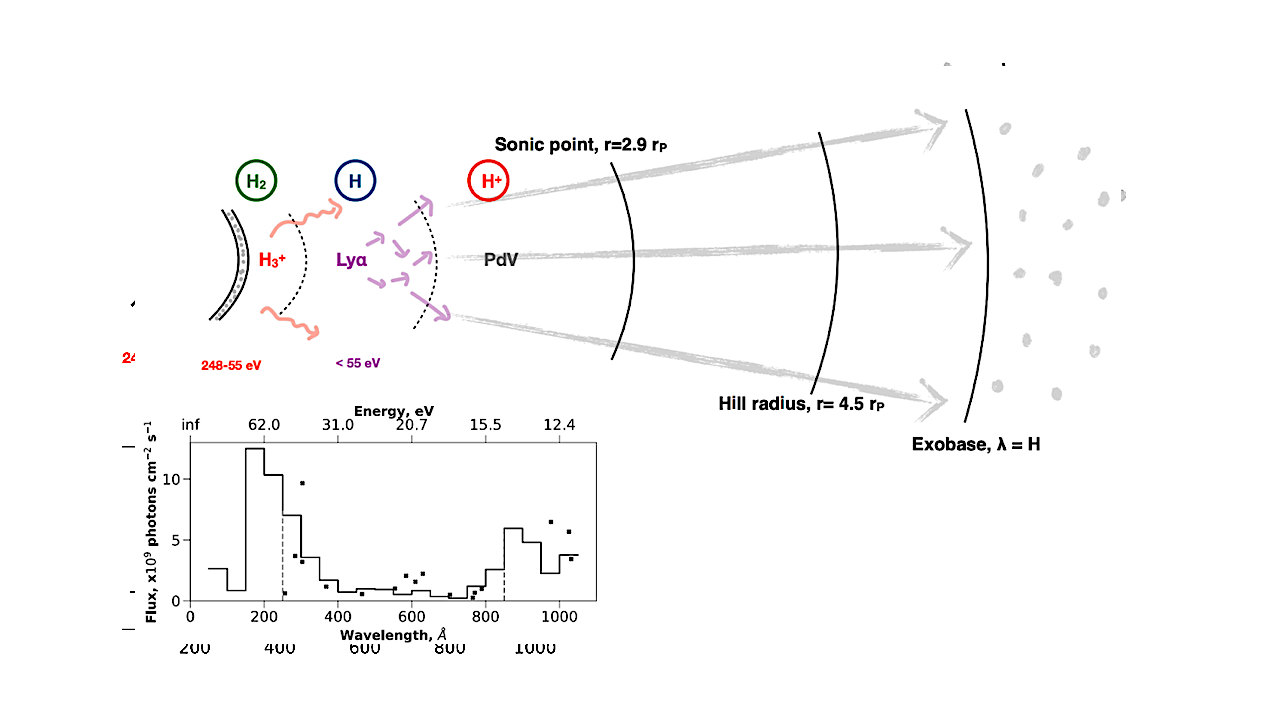

The three-layer diagram of the outcome of our model. The inner layer is the H2 layer cooled by H+3 , where the highest-energy photons are deposited. The neutral atomic hydrogen layer further up is predominately cooled by Lyman-α, with a contribution from P dV as well. Intermediate-energy photons are depostied there. The outflow layer is cooled via PdV . Its structure is shown as a hydrodynamic outflow out to the sonic point, extending out to the Hill radius of the planet, where the gas becomes unbound from the planet. The exobase, where the outflow can is no longer collisional, is shown. The spectrum below the diagram corresponds to the P200 model from Richards et al. (1994) with a high level of steller activity. The dots on the spectrum represent emission lines, and the bins are 20 wavelength bins with widths of 50˚A. The 248-55 eV photons’ τ = 1 surfaces lie within the H+3-cooled layer, and the 55 eV – within the Lyman-α-cooled layer. The 13.6 eV photons responsible for the resonant dissociation of H2 reach deeper in the H+3 – cooled layer. — astro-ph.EP
We develop a flexible one-dimensional code to model the escape of hydrogen and helium from a hot Jupiter as a result of photoionization from extreme-ultraviolet (EUV) radiation.
We include stellar spectrum heating and ionization, radiative cooling by Lyman-α and H+3, heat conduction, tidal gravity, a H-He reaction network, and account for the secondary ionization of species by photoelectrons.
For a fiducial hot Jupiter, we uncover a three-layer structure: an H+3-cooled layer of molecular hydrogen at the base, enveloped by a Lyman-α-cooled layer of neutral hydrogen, which transitions into an ionized wind layer that is cooled by adiabatic expansion. The highest spectral energy photons are deposited in the molecular layer, where, after accounting for energy loss via photoelectrons and ionization, H+3 is a substantial radiative coolant.
We run a grid of models, varying the distance of our fiducial planet from the star. We find that heat conduction at the base starts to have an effect at distances ≳0.2 au, increasing the H+3 cooling relative to the EUV input flux. At increasing stellocentric distances, the outflow becomes increasingly more neutral. The neutral hydrogen starts to decouple from the ionized outflow, free-streaming out.
In pure H-He mini-Neptune/super-Earth simulations, the outflows are significantly cooler, allowing molecules to survive throughout the outflow, pointing toward the likely importance of molecular cooling in determining whether these planets can maintain massive atmospheres. The analysis in this paper provides a framework for understanding the impact of molecular radiative cooling on atmospheric outflows.
Renata Frelikh, Ruth A. Murray-Clay
Comments: 44 pages, 23 figures, accepted for publication in ApJ
Subjects: Earth and Planetary Astrophysics (astro-ph.EP)
Cite as: arXiv:2511.15787 [astro-ph.EP] (or arXiv:2511.15787v1 [astro-ph.EP] for this version)
https://doi.org/10.48550/arXiv.2511.15787
Focus to learn more
Submission history
From: Renata Frelikh
[v1] Wed, 19 Nov 2025 19:00:00 UTC (1,349 KB)
https://arxiv.org/abs/2511.15787
Astrobiology,
Stay Informed With the Latest & Most Important News
Previous Post
Next Post
-
 012024 in Review: Highlights from NASA in Silicon Valley
012024 in Review: Highlights from NASA in Silicon Valley -
 02Panasonic Leica Summilux DG 15mm f/1.7 ASPH review
02Panasonic Leica Summilux DG 15mm f/1.7 ASPH review -
 03How New NASA, India Earth Satellite NISAR Will See Earth
03How New NASA, India Earth Satellite NISAR Will See Earth -
 04And Thus Begins A New Year For Life On Earth
04And Thus Begins A New Year For Life On Earth -
 05Astronomy Activation Ambassadors: A New Era
05Astronomy Activation Ambassadors: A New Era -
06SpaceX launch surge helps set new global launch record in 2024
-
 07Space Force plans new ‘Futures Command’ amid pressure to speed up modernization
07Space Force plans new ‘Futures Command’ amid pressure to speed up modernization












